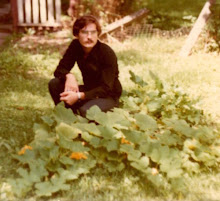Mock Interview About the Narrative Impulse
[Anthony?] Storr drawing on Winnicott writes:
Transitional objects gradually loose their emotional charge as the child grows older. Often such objects become linked with a variety of other objects and are used in play. Children easily transmute a broomstick into a horse, an armchair into a house. At a later stage overt play is replaced by phantasy, in which no external objects are needed to speed the flow of imagination.
This reminds me of Octavia Butler's telepaths who are able to pick up readings from objects and later embed memories into objects for learning.
Q. How is the charge lost?
Possible hypothesis: as a child grows its storytelling time shrinks (in certain cultures); the object falls out of the play of narrativization.
Q. How does the object become linked with a variety of other objects?
Possible hypothesis: through story. Which leads to an other question — how description becomes an emplotment of perception.
Q. Is the act of transmutation connected to the act of linking objects?
Possible hypothesis: narrative plays with sets — their creation and rearrangements.
Q. Does practised displacement of objects abet the imagination?
And so for day 641
14.09.2008
